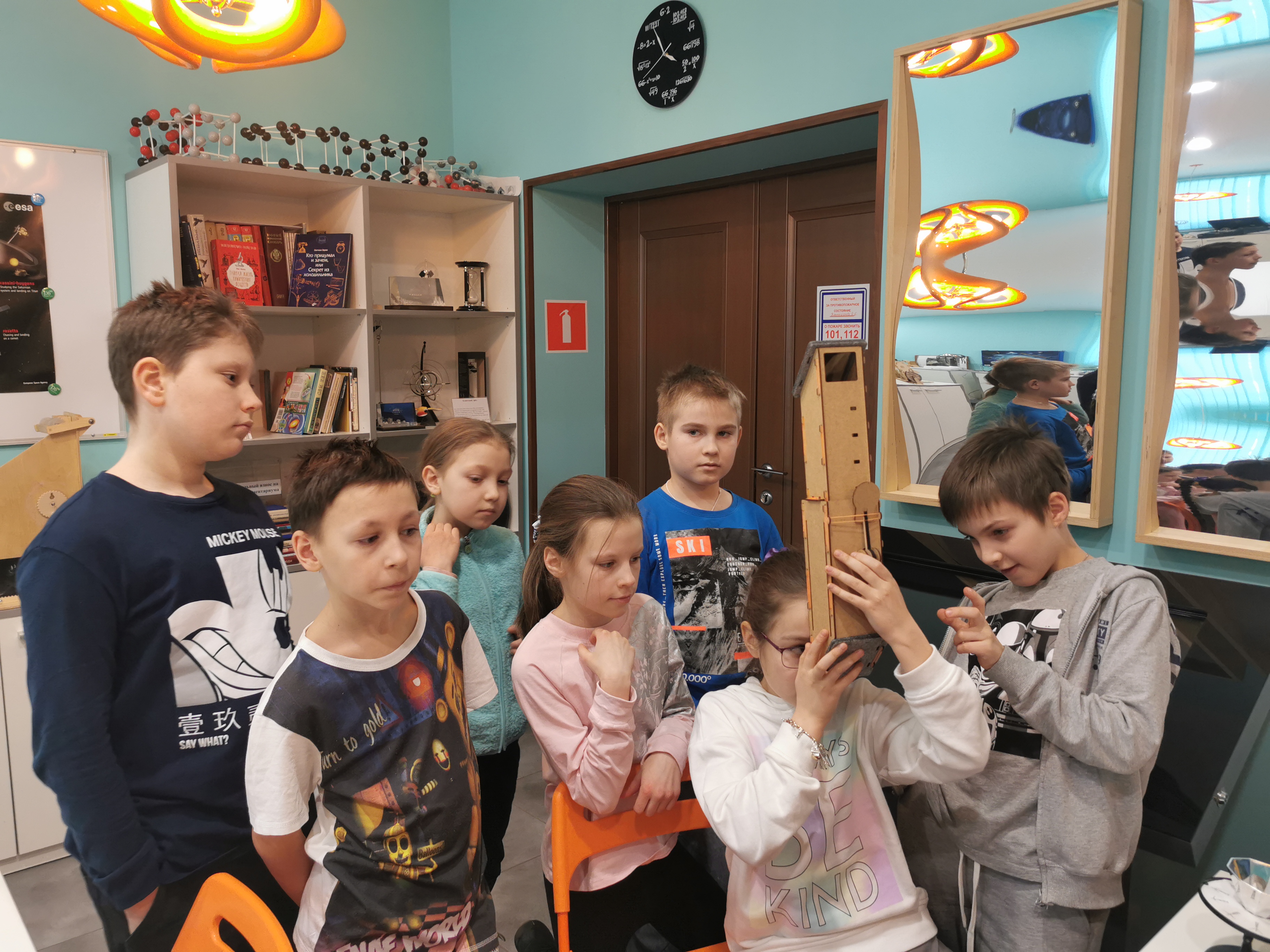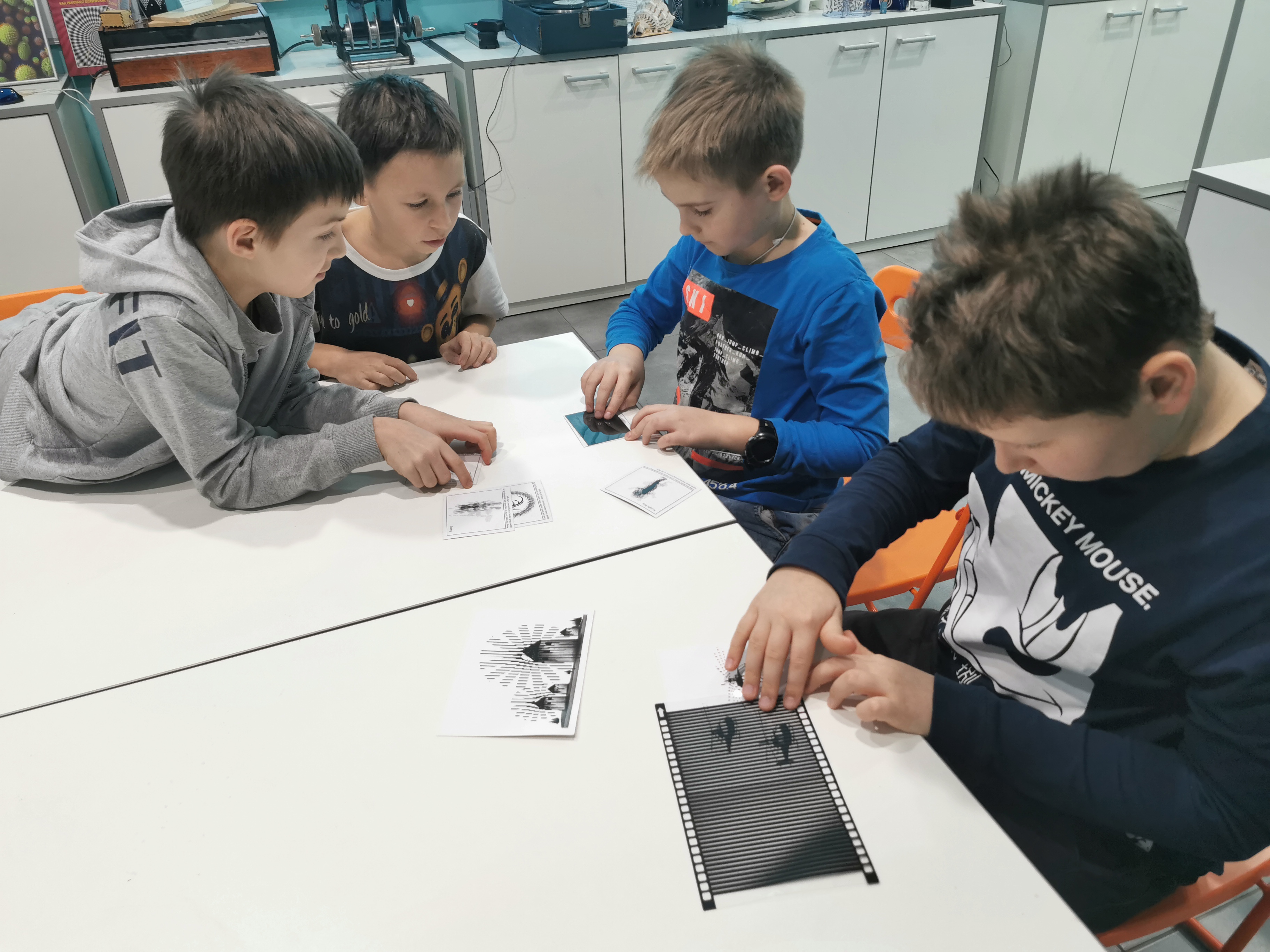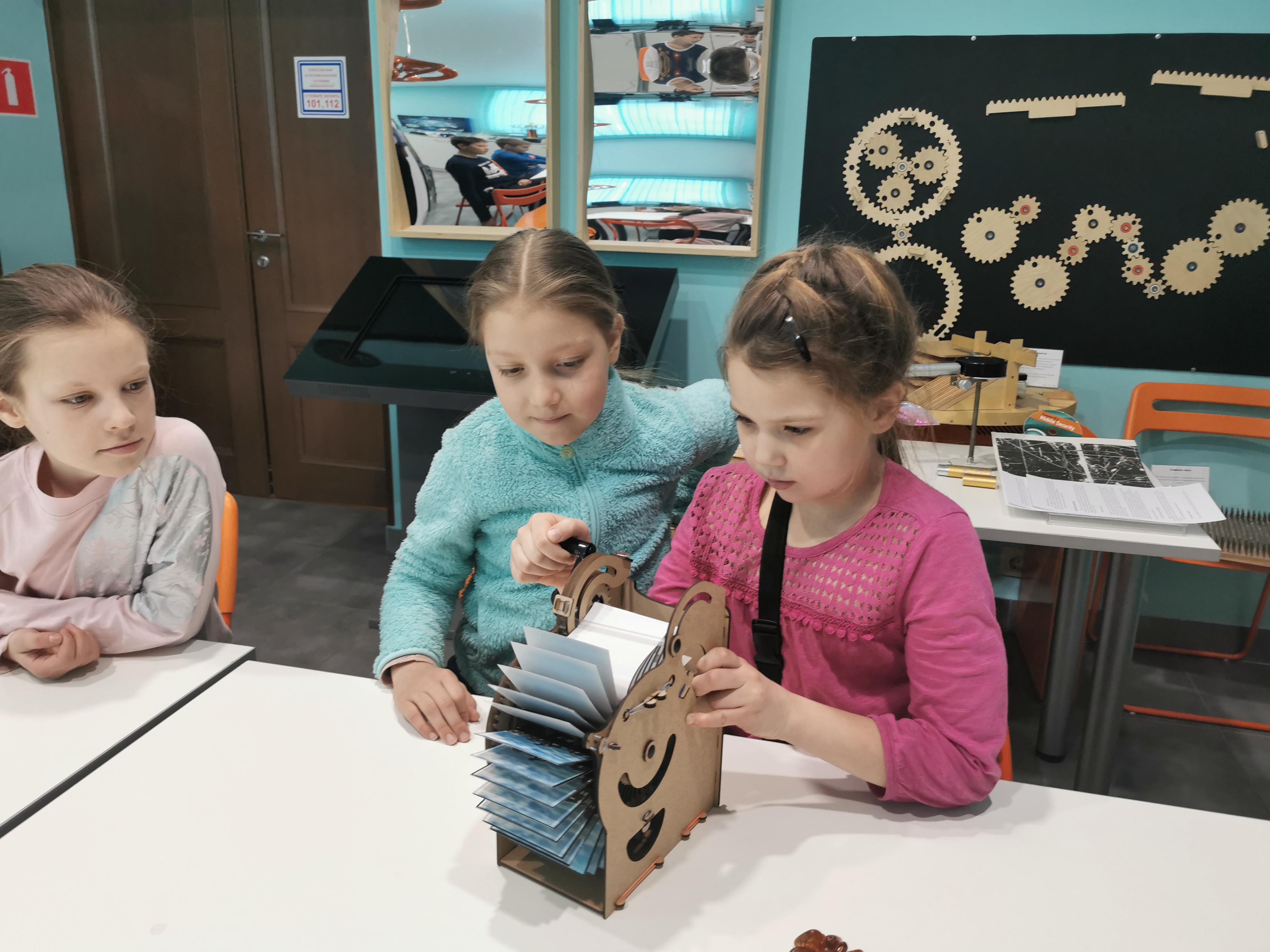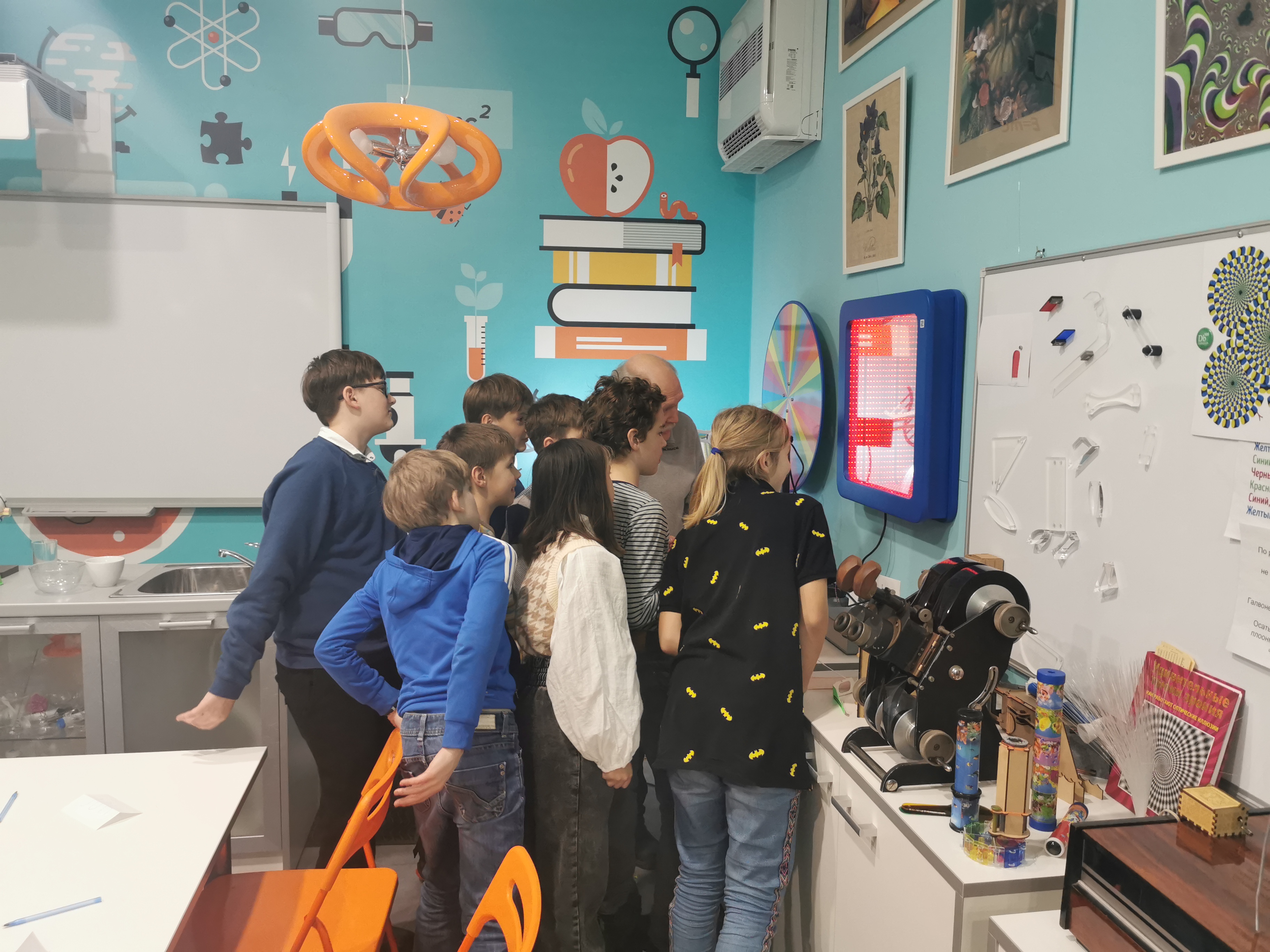Classroom lessons in JINR museum
Education, 29 March 2022
Since February 2022, the Club of Future Scientists at the Museum of History of Science and Technology of JINR has been implementing a new project “Classroom lessons in the museum” or rather in the Classroom Laboratory.
The project is created for 2-6 grade school students. Lessons are held in groups of up to 10 people. Thus, each student can participate in experiments and “touch” physics. The project’s aim is the introduction of children to the basics of physics in different ways, comprehension of physics laws through visual images. The organizers of the project try to present physics in a simple, understandable, exciting way in the context of life impressions and a range of interests of a child. The organizers demonstrate experiments using those exhibits that were collected in the Classroom Laboratory. Lessons are divided into the basic sections of physics such as optics, acoustics, mechanics, magnetism, electricity, etc. The organizers is also going to cover such subjects as mathematics, chemistry, biology at their lessons.
The project started with optics according to the organizers’ decision. To date, there are various optical instruments in the Museum. They can demonstrate the most unexpected effects. The first lesson started with an explanation of what an optical instrument is, which optical instruments surround us in everyday life. Then, during the course of lessons, explanations and demonstrations of experiments will be presented from simple to complicated, from ordinary to unusual, from unusual to extraordinary. School students will be looking for answers to various questions. Is it possible to see half of yourself and half of your friend in the mirror? Is it possible using a system of mirrors to pierce a 10-ruble coin with your finger? What is the difference between an eye of a dragonfly and an eye of a person? What is a demonstration telescope? It is a simplified telescope in the section so to say. With its help, we can reproduce a well-known experiment of Newton on the decomposition of white light into a rainbow spectrum. And how are cartoons created? There are tools for animation in the Classrom Laboratory. For example, a manual praxinoscope, a multi projector on gears, sets for raster animation.
The organizers of the project hope that their lessons will provide a broad basis for children’s curiosity, extend their outlook, and of course, help in further comprehension of the laws of physics.
All information about the lessons is in the group of the “Club of Future Scientists” on VK.



